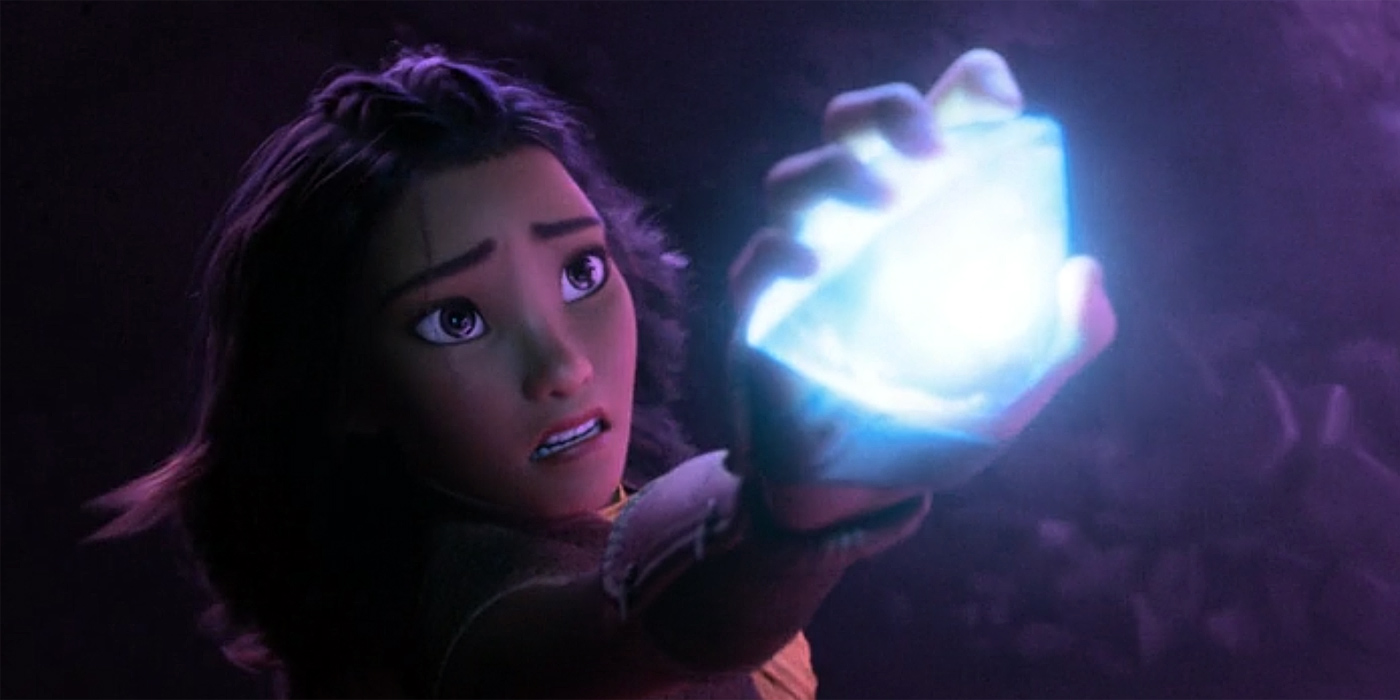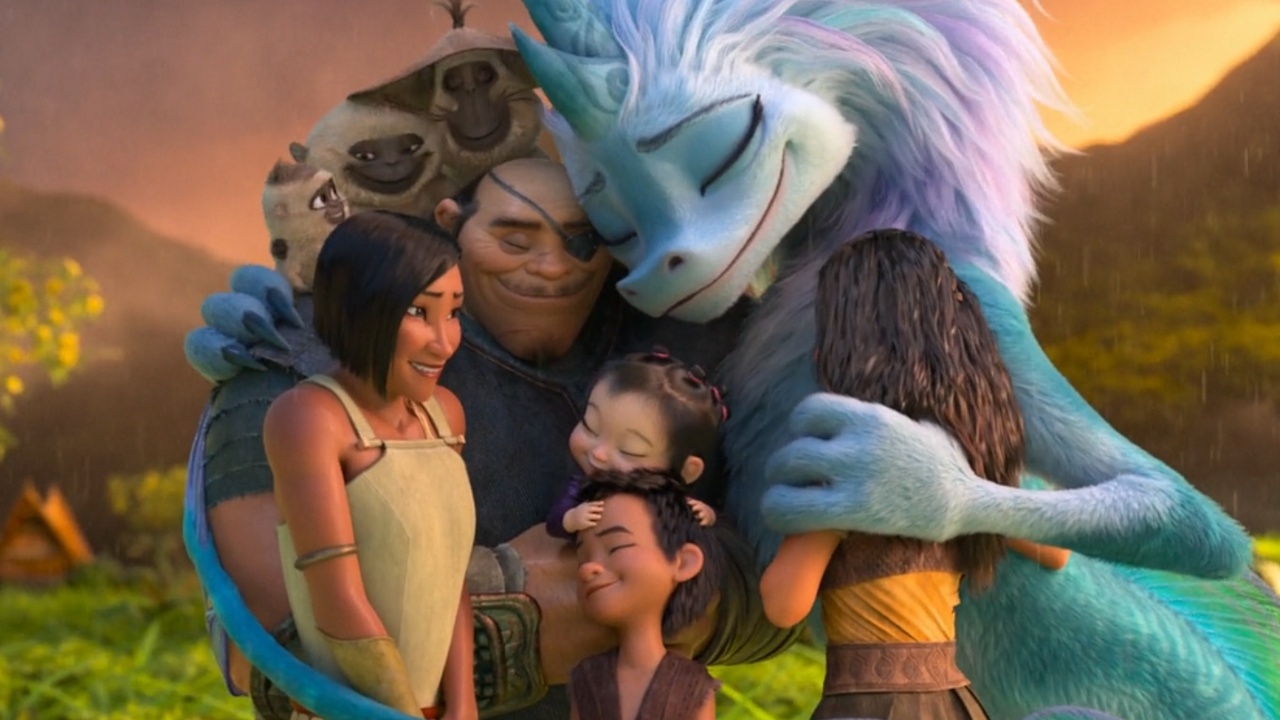Raya and the Last Dragon introduces audiences to Kumandra, a vibrant, fictional world inspired by Southeast Asian cultures, where magic and warriors coexist. Directed by Don Hall and Carlos López Estrada, the film follows Disney’s traditional heroic formula while expanding it, placing the fate of an entire nation on the shoulders of one determined warrior, Raya.
The narrative weaves together action, fantasy, and heartfelt moments, immersing viewers in a journey that is both visually spectacular and emotionally resonant. Beyond the adventure, the story delves into universal themes of trust, unity, and forgiveness, framing the movie’s central conflict around personal growth and societal healing.
The story unfolds in Kumandra, a land divided into five tribes, each representing a unique region with distinct cultures and values. Five centuries before the main events, dragons sacrificed themselves to protect humanity from a destructive force known as the Druun.
When the Druun resurface, the responsibility to save Kumandra falls to Raya, who must find the last surviving dragon, Sisu, voiced by Awkwafina. Raya’s quest is more than a mission to restore a magical artifact; it becomes a journey of reconciliation and trust, as she interacts with members of tribes she once considered enemies, uncovering the importance of collaboration for the greater good.

Raya’s Journey Tests Her Growth, Forgiveness, and Trust Amidst Tribal Conflicts
Raya’s quest begins six years after her initial encounter with the Druun, motivated by personal loss and guilt. As a child, her failure to recognize Namaari’s hidden motives results in the destruction of the Dragon Gem, indirectly causing the Druun’s return and the petrification of her father, Chief Benja.
Throughout her journey, Raya witnesses the devastation left by the Druun, fueling her determination to locate Sisu and restore Kumandra. While the overarching goal is to defeat the monsters and revive her people, the journey emphasizes Raya’s emotional growth, highlighting the significance of trust, friendship, and resilience in the face of overwhelming challenges.
Raya’s journey is complicated by Namaari, daughter of Fang Land’s chieftess, who becomes both her rival and eventual ally. Namaari’s initial attempts to stop Raya stem from personal ambition and a desire to protect her tribe, which prospered in Fang Land while others suffered from the Druun.
The complex motivations behind Namaari’s actions add depth to the narrative, demonstrating how fear, pride, and self-interest can shape relationships and decisions. However, as the story progresses, Namaari’s character evolves, illustrating that even adversaries can embrace change and work toward a common goal when trust is established.

Raya and Namaari Unite, Showing Trust and Collaboration Can Restore Kumandra Together
Raya and Namaari’s combined efforts are crucial in saving Kumandra, though not without challenges. Sisu’s temporary death, caused indirectly by both women’s selfish decisions, forces them to confront their flaws and collaborate. Ultimately, Raya sacrifices her own piece of the Dragon Gem to demonstrate trust, inspiring others to follow suit.
This collective effort culminates in the restoration of Kumandra and the defeat of the Druun, reinforcing the central message: unity and faith in one another are the true sources of power. By setting aside tribal differences and working together, the characters embody the film’s overarching theme of reconciliation and shared responsibility.
Throughout the journey, Raya is joined by a diverse group of allies, including Tong, Boun, Little Noi, and Sisu. Each character represents a different tribe, reflecting Chief Benja’s vision of a united Kumandra. Initially skeptical of Namaari, the group learns to trust her, emphasizing the importance of understanding and forgiveness.
The diverse composition of the team mirrors the larger narrative of unity among tribes, showing that collective action and mutual respect can overcome past grievances. Through their combined efforts, the allies exemplify how cooperation can amplify individual strengths and accomplish seemingly impossible feats.
The film’s conclusion underscores its central theme: the transformative power of trust. Sisu’s guidance teaches Raya that the world’s divisions stem from distrust, a lesson that enables Raya and Namaari to repair the Dragon Gem and save Kumandra.
By placing faith in one another, they restore the land and its people, illustrating how trust, forgiveness, and collaboration can heal both personal and societal wounds. In the end, the dragons are resurrected, Kumandra’s tribes reunite, and Raya fulfills her father’s vision of unity. The story demonstrates that while power and magic are vital, the true magic lies in human connections, trust, and the willingness to embrace reconciliation.



